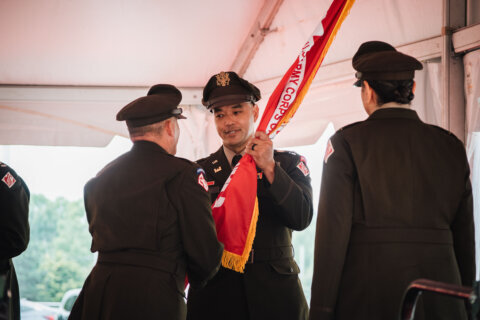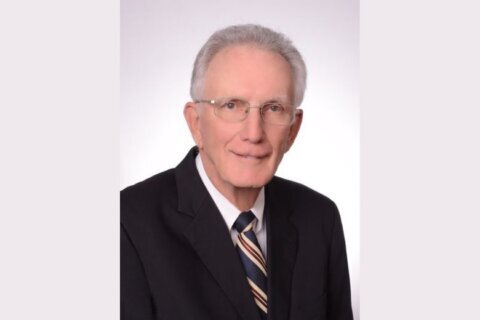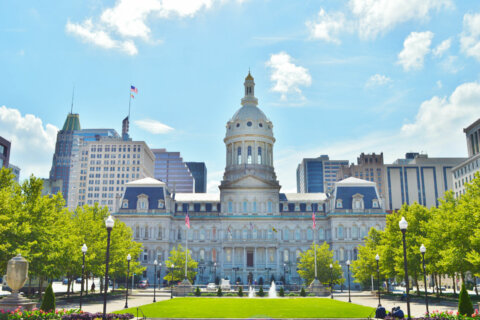BALTIMORE (AP) — A Baltimore judge said he would deliver his verdict Thursday in the case of a police driver who faces the most serious charge after a 25-year old black man’s neck was broken in the back of his transport wagon, setting off some of the worst protests the city has ever seen.
Officer Caesar Goodson, 46, was charged with second-degree murder, manslaughter, assault, reckless endangerment and misconduct in office after the death of Freddie Gray, who suffered a catastrophic spinal injury when officers bound his hands and feet but left him otherwise unrestrained inside the metal compartment.
This is the third trial in the sweeping case against six officers that State’s Attorney Marilyn Mosby announced in the wake of protests and rioting in Baltimore’s inner city. The violence ended the police commissioner’s career and aborted the mayor’s political future. Some say Mosby’s reputation now hinges on the outcome.
The first two trials ended without convictions: Officer Edward Nero was acquitted of misdemeanors by the same judge, Barry Williams. And the only officer so far to choose a jury trial, William Porter, will be retried in September after the jury failed to agree on his fate.
Goodson is the officer prosecutors said was most responsible for Gray’s death.
___
THE CASE
Goodson’s non-jury trial went to the judge after more than five days of testimony. Prosecutors say Goodson was criminally negligent when he failed to buckle Gray into a seat belt or call for a medic when Gray indicated he wanted to go to a hospital.
At first, they alleged he gave Gray a “rough ride,” intentionally driving erratically in order to “bounce Gray around” in the back of the van when Gray’s leg shackles and handcuffs left him unable to steady himself.
But Goodson’s refusal to talk with investigators or testify at trial left prosecutors with slim evidence of the intent to harm needed to sustain a murder verdict. Prosecutors abandoned the “rough ride” theory after a video showing Goodson rolling through a stop sign and making a wide turn before stopping to check on his prisoner failed to create the desired impact.
Goodson’s defense attorney said the officer didn’t buckle him in because Gray showed “violent and erratic behavior” during and after his arrest. Witnesses testified that Gray was screaming, flailing around and kicking the wagon doors with such force that the van shook.
Defense attorney Matthew Fraling also said Goodson didn’t call for a medic because Gray didn’t exhibit any signs of injury or distress, and only asked to go to a hospital to avoid jail. Goodson’s defense says Gray must have suffered his fatal injury after Goodson last checked on him before arriving unresponsive at the station house.
___
THE DRAMA
Goodson’s trial included quite a bit of courtroom theater, as prosecutors and detectives accused each other of subterfuge, misconduct and dirty dealings in open court.
Chief Deputy State’s Attorney Michael Schatzow accused a high-ranking detective who led the police investigation of trying to sabotage the case. Detective Dawnyell Taylor then said prosecutor Jan Bledsoe refused to accept her notes from a conversation with the medical examiner who ruled Gray’s death a homicide. Taylor testified that her notes said the medical examiner initially believed Gray’s death was a “freakish accident.” The exchange was prompted by the judge’s order that prosecutors, who had been withholding information, hand everything over to the defense or face sanctions.
___
THE CITY
Thousands protested after Gray’s death last year. Rioting and looting broke out across swaths of the city, causing millions of dollars in property damage. After Porter’s mistrial there were largely peaceful protests and just two arrests.
As with the other trials, Baltimore police have canceled leave and put on notice the National Guard, which rolled into town to impose order after Gray’s death. That civil unrest began when students just let out of school clashed with police officers.
This time, students are more likely to be with their families, because Baltimore’s public school year ended on Tuesday.
Still, activists with the People’s Power Assembly have organized a demonstration outside the courthouse to begin as the verdict is being delivered.
___
THE FAMILY
The city pre-empted a fight in civil court by awarding Gray’s family a $6.4 million settlement. Since his death, Gray’s relatives have repeatedly called for peace, and their attorney, Billy Murphy, praised the judge’s acquittal of Nero.
“Under similar circumstances, he may have bent to pressure, tremendous pressure, to do in this case what the black community wanted him to do. So my hat’s off to him,” Murphy said.
Murphy said the family has always wanted justice, but that doesn’t necessarily mean a guilty verdict.
Copyright © 2024 The Associated Press. All rights reserved. This material may not be published, broadcast, written or redistributed.







